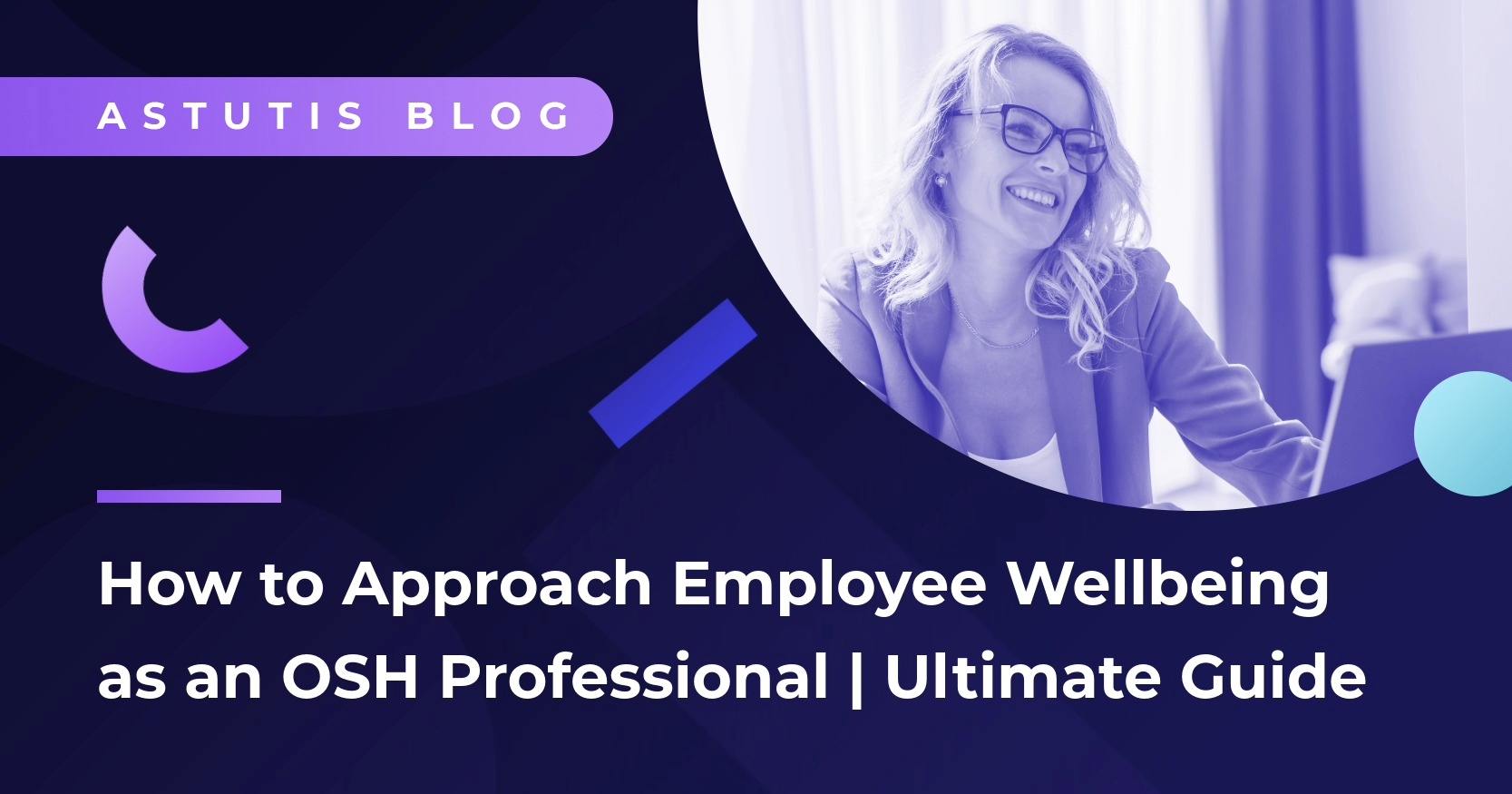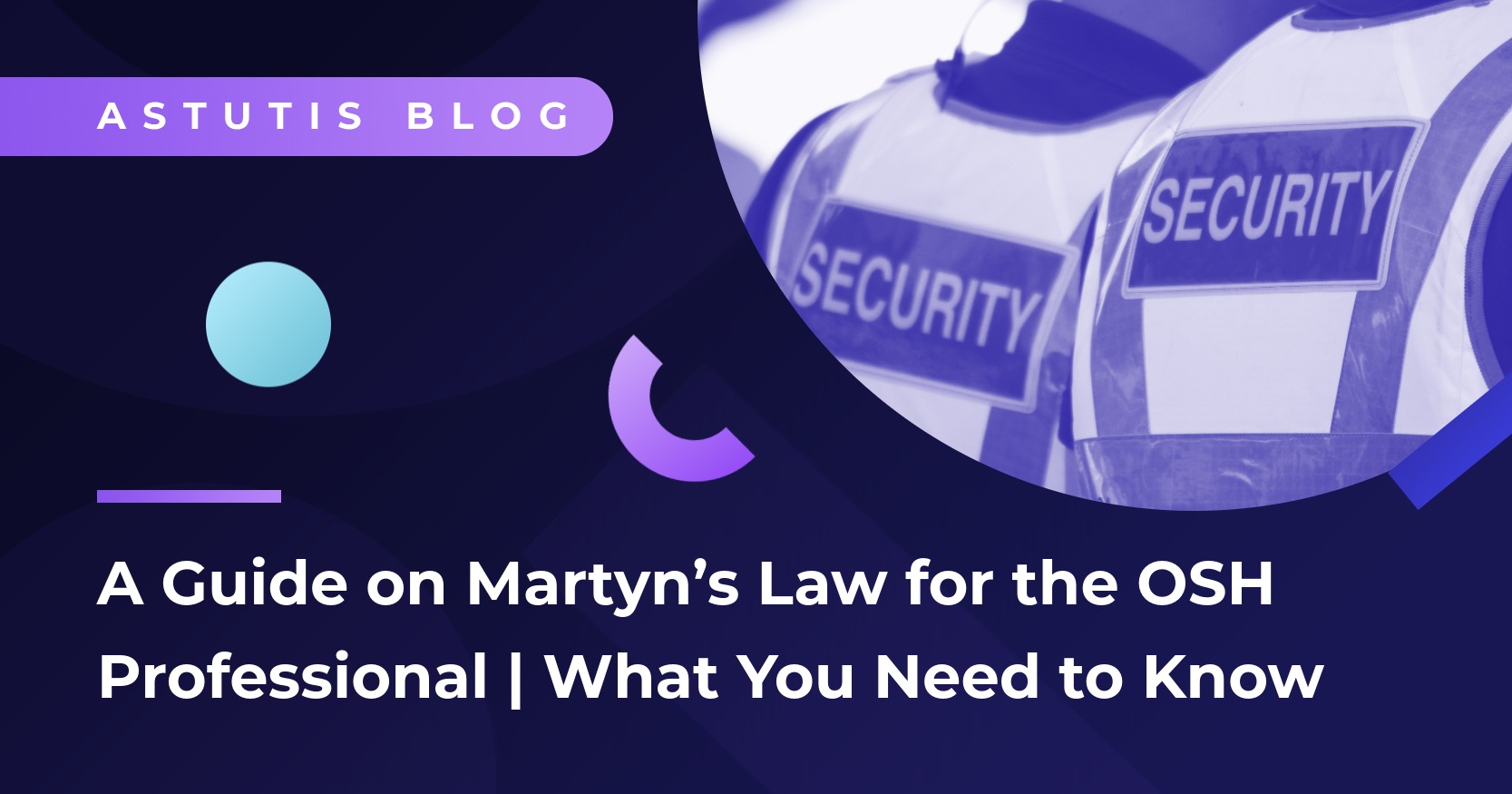How To Maximise Your Virtual Training Experience
Undoubtedly, the most significant trend in training over the last several years has been the general transition to digital training. Circumstances such as the pandemic and the subsequent requirement to work from home have contributed to the drastic increase in digital preferences.
Digital training has largely wholly changed the training landscape. The Online and Virtual Classroom (“Virtual”) formats gift flexibility and control to the learner like never before. Learners can now train when and where they wish; they can take tutor-led training sessions in their own homes and fit the training around their schedule, not the other way around.
Data suggests that digital training and, more precisely, the phenomenon of Virtual training is very much here to stay. According to the upcoming Astutis Health, Safety and Environmental Training Report 2022-2023, data suggests that well over 50% of companies enrol their staff on virtual training. Our report concludes that employers are actively transitioning into upskilling their staff via online training, with over 18% of companies moving away from traditional Online or Classroom learning and onto Virtual training.
Little is said, however, of how to maximise the potential of this trend. How can learners take the very most out of their virtual training? What are the best practices? These are the very questions this blog will answer. It will draw on professional studies in the training field to understand the science and theory behind it, and it will lean on the attitudes of our virtual tutors and learners.
Teaching New Training Old Tricks
New training methodologies inevitably have to draw on strategies adopted from classroom training. The preparation phase is notable for learning format cross-fertilisation.
Effective Virtual training requires adequate preparation. One of the leading pioneers in accelerated learning, the late Dave Meier, firmly believed that all training, no matter the platform, must be preceded by an enforced preparation phase. Virtual training, in fact, requires more preparation to compensate for the physical intervention of in-person contact.
For Meier, learner preparation:
- Ensures learners are out of a passive state and more receptive.
- Can increase learner interest and arouse curiosity.
- Establish active learners who are eager to learn about the subject matter.
Successful training preparation for Virtual trainers can mirror preparation for other training formats. However, as explored above, more care must be administered to cater to any potential technological dysfunction. Fundamentally, goals should be set for each session, and a summation of the learning outcomes presented after formalities establishes an inspired mindset from the beginning of the session.
Learners can do their very own preparation. As with all learning methods, we recommend reading around topics present in their course. This helps add valuable context and further understanding.
One further question surrounds the optimal number of learners in one Virtual session. In 'The Virtual Training Guidebook', Cindy Huggett advocates for a modest number of virtual learners in any one session. The widespread view on the optimum number of learners in one session is twelve. Tutors cite this number as their preferred number because additional learners would not be visible on their screen during the session. Any more than a dozen learners in one session can restrict the interpersonal dynamics that can flourish, according to McFadzean and McKenzie. However according to Astutis Virtual Trainers, larger numbers, especially among the public course cohort, often incite a greater depth of discussion and real-life example sharing from representatives of different industries.
Introducing a New Collaborative Environment
For many scholars in the field of training, Virtual training establishes something that no other training can; a collaborative environment that, because of the nature of the platform, wholly depends on what Meier describes as "the social nature of learning". Meier cites collaboration as a great stress reducer, which eliminates any sense of competition. Learners, therefore, collaborate to everyone's benefit, not just their own.
To create an environment where learners can collaborate, Virtual tutors must invite total learner involvement from the course's inception. From the very first session, tutors should denounce any sense of hierarchy and request that learners be free to contribute when they wish. Research suggests that learners often become audiences to their tutors out of fear of being an interruption or a nuisance. Therefore, tutors should invoke a sense of collaboration within their learners from the very beginning. Engaging activities or tasks which require learners to interact and engage with their peers and their tutors help reduce any fear or learner stress.
It is vitally essential for the tutor to introduce themselves to the group of Virtual learners in an engaging way. The tutor can then ask for more than just a brief introduction from each learner to make an icebreaker unique. Tutors need to remember that their learners will take the introductory moments of the course with them for the rest of the course. It will set the tone and the atmosphere. If it is boring, that could invoke passiveness in the learner. Ann Gravells concludes that these activities can be replicated at the beginning of every session. Such exercises, otherwise known as energisers, reinforce learner focus before the training begins.
Multiple studies into Virtual training indicate that learners must embrace technology to yield the best returns. The collaborative nature can lead to exciting dynamics if they can embrace it. McFadzean and McKenzie, among others, believe:
''Students should be encouraged to be both 'teachers', to offer information and insights from their own experiences; and learners, which allows them to gain information and insights from other members of the group, as well as the tutor.''
We always urge Virtual learners to make the most of the vast resource base at their disposal. Virtual training has the power to be an individual experience - however - it does not have to be. Virtual training establishes a small, intimate community consisting of the tutor and a small number of learners. Learners can help each other and work towards their collective goal of passing the course, whilst becoming acquainted.
Smith and Hardaker argue that "Virtual learning environments provide the foundation for complexed and dynamic communities". They suggest learners must engage with their peers and communicating as much as possible will enrich the educational experience.
Virtual learning offers opportunities that other learning formats can often unintentionally neglect. For instance, Virtual training usually requires learners to research a topic before a session. In the field of training, this is called self-discovery learning. A Polytechnic University of Valencia study found that self-discovery learning can be the most effective form of preparation for Virtual learners. Multiple studies indicate that self-discovery learning embeds a proactive desire in the learner, giving them an ultra-retentive mindset heading into their Virtual session.
Virtual Training Requirements and Learner Responsibility
Learners have a level of responsibility for their learning, especially when enrolled on a Virtual training course. Most notably to ensure they have their camera on at all times. When learners have their cameras on, the collaborative nature of Virtual training can take hold. With the camera, learners can exhibit total learner involvement - Learner receptiveness is high because there is an impetus for their participation.
Without a camera, learners are sabotaging their learning. Tutors can find it hard to develop interpersonal relationships with their learners; there can be a barrier for the camera-less learner to ask questions or, at worst, become passive.
Learners are, themselves, responsible for certain aspects of the Virtual learning experience. Primarily, they are wholly responsible for being ready and in the mindset to learn. Self-discovery tasks Next comes to the necessity to eliminate distractions. The reasoning behind this is two-fold:
- A distracted learner disrespects the effort and profession of the tutor.
- A distracted learner is sabotaging their learning and the potential learning of their peers.
Summary
In conclusion, Virtual training affords a new found flexibility and optimises technological breakthroughs that can only work to the learner's benefit. To maximise their returns, we always recommend learners embrace the technology and take advantage of the tools.
Widespread research indicates that the collaborative nature of Virtual Training promotes learner interaction, therefore ensuring learners are more retentive. Tutors have a responsibility to ensure sessions are well prepared for and have designated learning outcomes. Furthermore, tutors must begin their course in an engaging manner to alert learners that sessions rely on collaborative learning. Learners also hold responsibility too. Learners must ensure they are ready to learn, without distractions. This also includes ensuring they have their cameras on at all times. Learner visibility only encourages proactive learning and negates the possibility of passive learners.
References
Hardaker, Glenn and Smith, David C. (2000) e-learning innovation through the implementation of an internet-supported learning environment. Journal of educational technology and society, 3 (3). pp. 422-432. ISSN 1436-4522.
Young, J., Gifford, J. and Lancaster, A. (2021) Effective virtual classrooms: an evidence review. London: Chartered Institute for Personnel and Development.
Meier, D. (2000) The Accelerated Learning Handbook. New York. McGraw & Hill.
Simmonds, D. (2006) Designing and Delivering Training. Chartered Institute of Personnel and Development. London.
Gravells, A. (2012) Preparing to Teach in the Lifelong Learning Sector. SAGE. London
Huggett, C. (2013) The Virtual Training Handbook: How to Design, Deliver and Implement Live Online Learning. ASTD Press. New York.
Mosaliuk, J. (2012) Training in virtual environments: putting theory into practice. Taylor & Francis Online. Ergonomics. Volume 56, 2013. Issue 2.
McFadzean, E. and McKenzie, J. (2001), "Facilitating virtual learning groups: A practical approach", Journal of Management Development, Vol. 20 No. 6, pp. 470-494.
Bri, D. Garcia, M. Coll, H. Lloret, J (2009) A Study of Virtual Learning Environments. Polytechnic University of Spain. Valencia.
Crompton H. Burke D. (2018). The use of mobile learning in higher education: A systematic review. Computers & Education.
Related Blog

Real Life Stories









